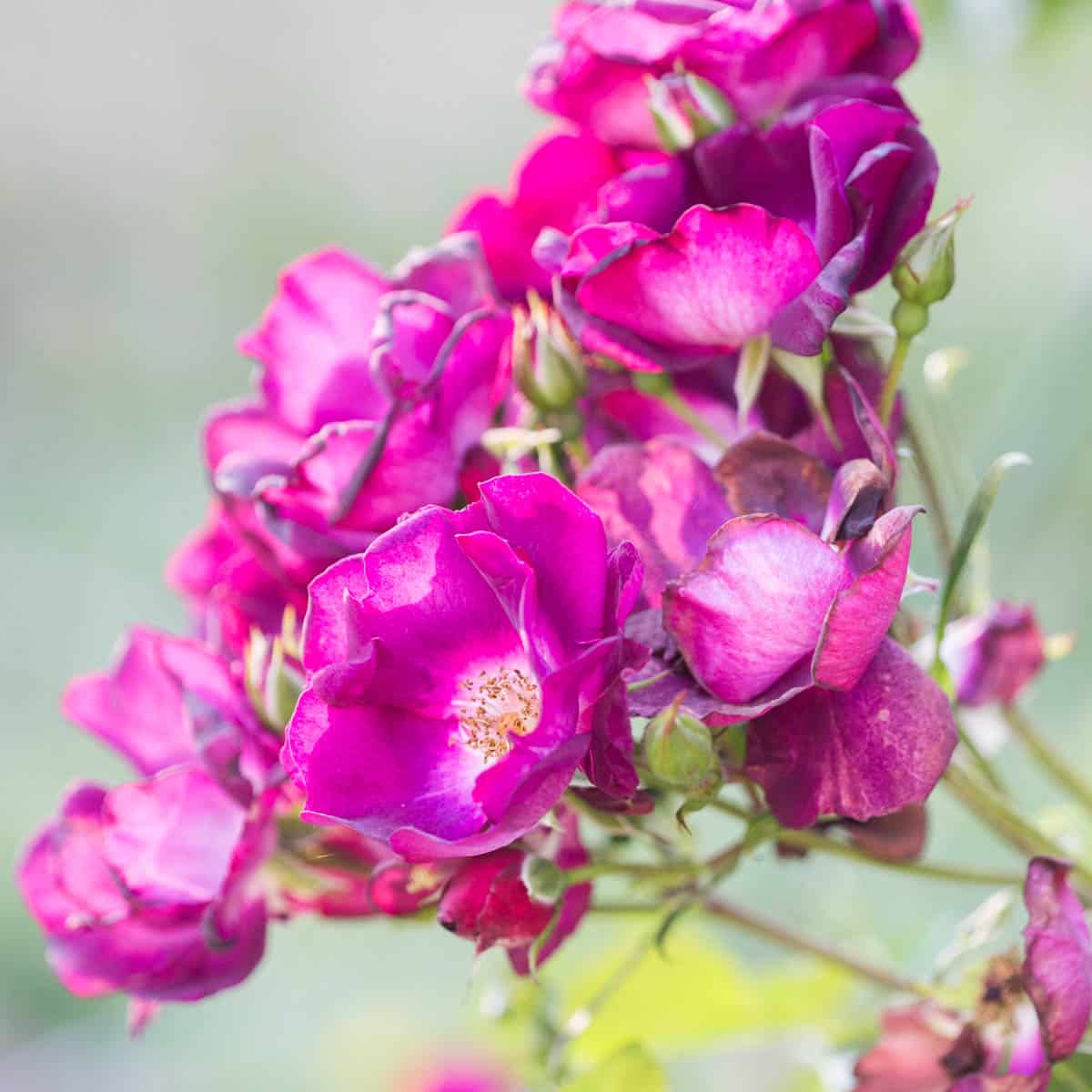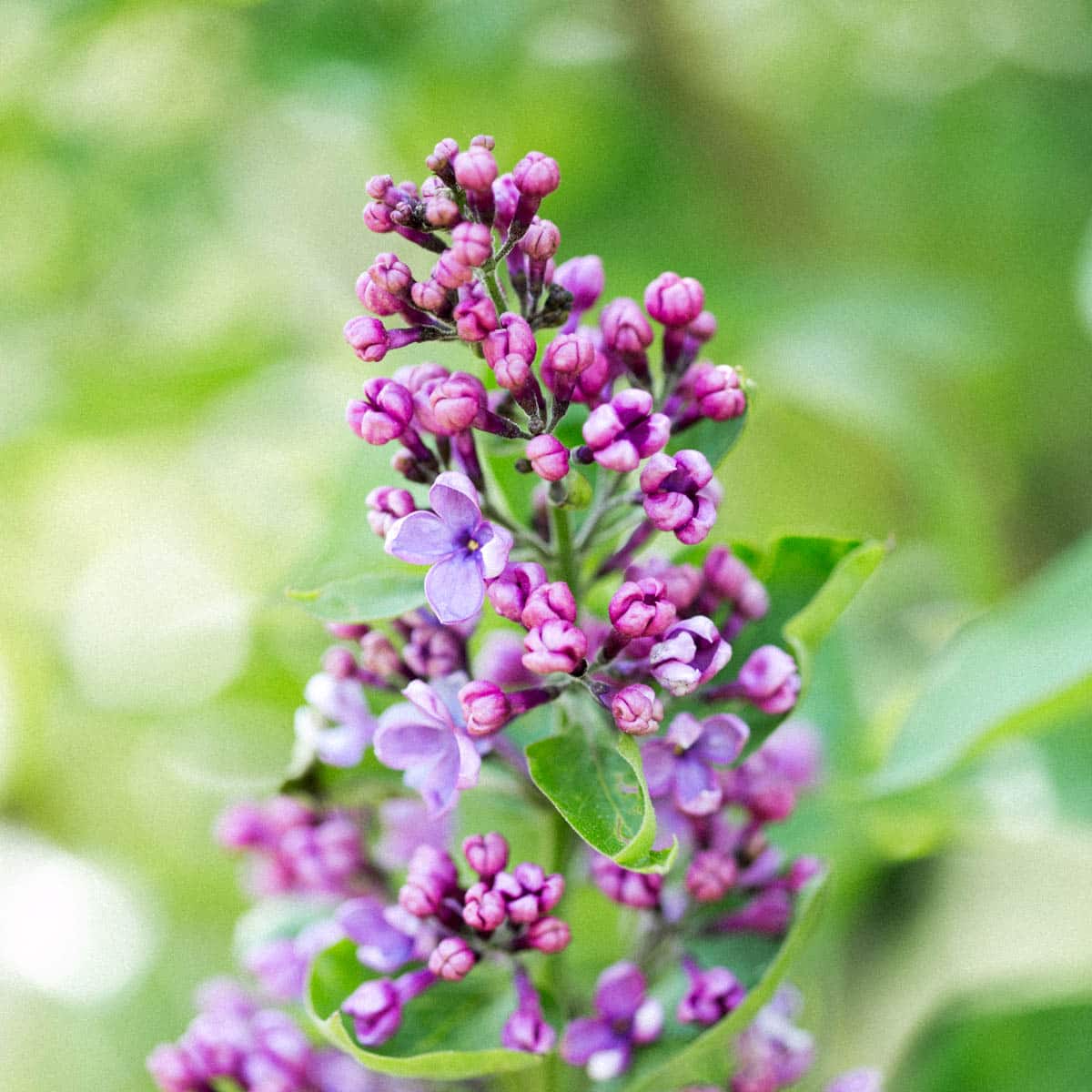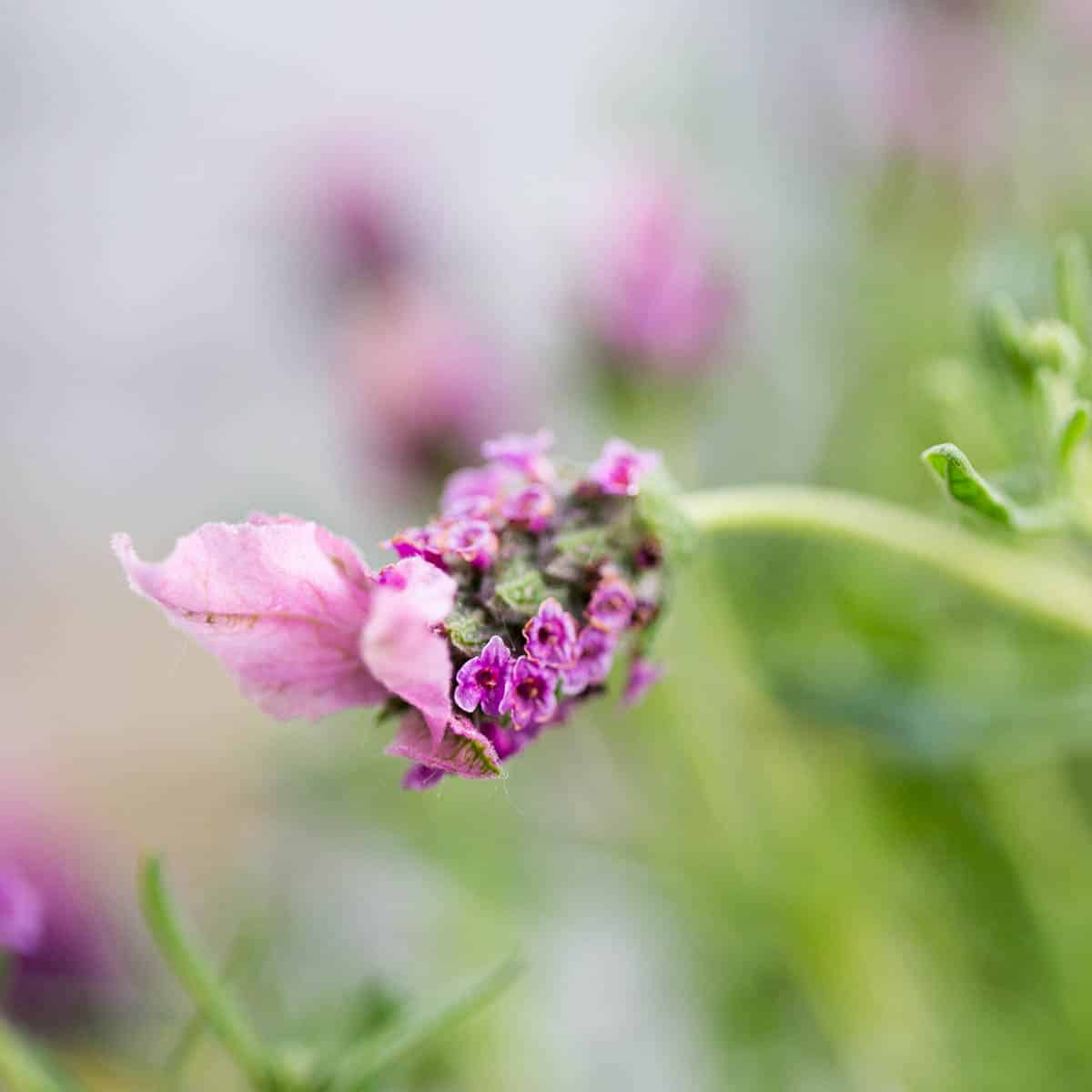All About Wild Sunflowers! (And How To Grow)
Waves of cheerful wild sunflowers brighten up roadside ditches the world over. These happy wildflowers, also known as common sunflowers, are native to North and Central America.
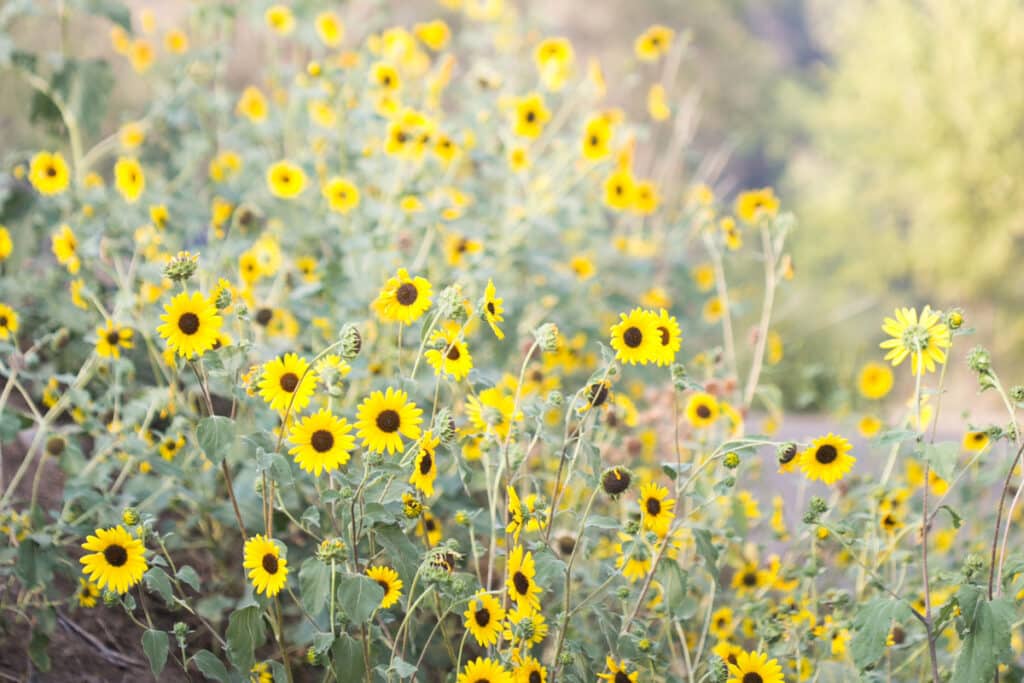
You may be lucky enough to live in an area where these cheerful beauties thrive. Or, you may have driven through an arid region and found yourself wondering about the wild sunflowers that hug hillsides and wave from dusty hillsides.
Either way, you are at the right place to learn all about these prolific yellow flowers. Today, we are sharing all there is to know about wild sunflowers.

Wild sunflowers are the grandfather of all modern sunflower plants. All sunflower varieties, such as dwarf or giants, were propagated from this main species! They are hardy, easy to grow, and beautiful.
Learn how to grow red sunflowers here.
Why You’ll Love Them
There are many benefits to growing common sunflowers:
- Native, symbiotic with environments in North and Central Amereica
- Incredibly easy to grow
- Feeds natural habitat (birds, bees, butterflies, squirrels, etc)
- Attracts pollinators: birds, bees, hummingbirds and more!
- Makes excellent boarder flower, good for mass planting
- Edible
- Excellent cut flowers
We’ll explore these reason to grow wild sunflowers (and more) below.

Scientific Name
The scientific name of Wild Sunflowers is Helianthus annuus. They are also referred to as Wild, Native, or Common Sunflowers. You can explore the different parts and functions of sunflowers in our article here.
What Do Wild Sunflowers Look Like? (Identification)
What do wild sunflowers look like? Common sunflowers are multi branching, with many small flower heads, which range in size from 3 to 4 inches. Their leaves and stems are sage green with coarse, hairy bristles. Veined leaves have jagged edges, and the plant branches many times.
They can vary greatly in height, from 1.5 feet tall up to 8 feet.
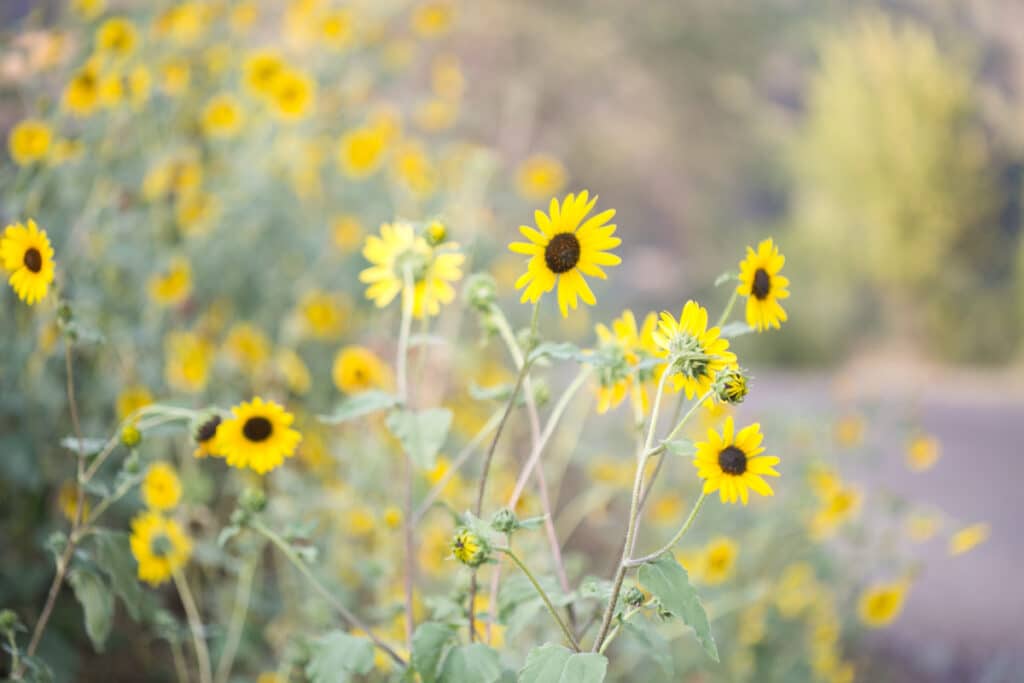
The center head contains a reddish brown disk from which many yellow ray shaped petals extend. They can grow up to 8 feet in height, although you will often find them shorter, depending on growing conditions.
These flowers bloom prolifically, with many flowers per plant (each plant can have dozens of flower buds!). They grow in clusters of plants, leading to an impressive show of sunflower beauty.
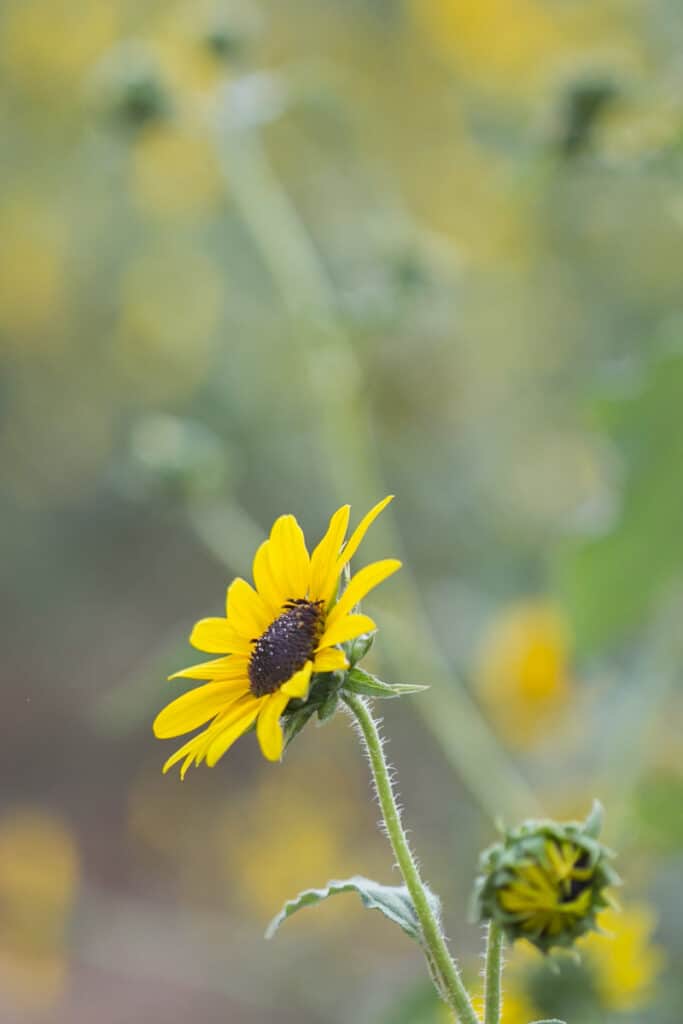
Did you know? Sunflowers come from the second largest plant family, Asteraceae, which contains over 20,000 species of plants!
Where Do Wild Sunflowers Grow?
Wild sunflowers are typically found growing naturally in dry, arid regions. Remarkably, sunflowers can grow in all 50 states. Common sunflowers thrive in dry, open spaces with an arid climate and plenty of sun. They tend to grow near prairies, fields, rocky cliffs and grasslands of the Western parts of the United States, Mexico, and Canada.
In the state of Oregon, for example, wild sunflowers are typically not found on the western most part of the state. However, on the drier eastern side you will find them growing prolifically.
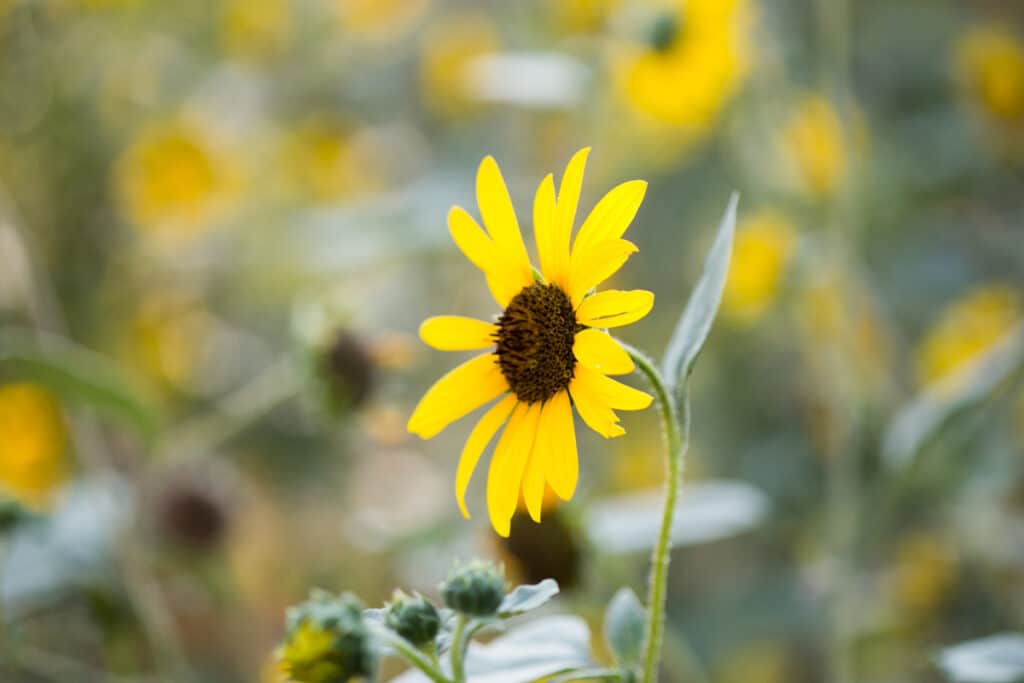
Looking for more beautiful annuals to grow? Get the list here.
Where To Buy Seed
Common sunflowers are often included in wildflower mixes. You can also look for seed labeled as “wild sunflowers” or native sunflowers. You can purchase seed through nurseries online such as American Meadows.
Soil
Although sunflowers are not picky about soil, their ideal condition would be fertile, well draining soil. They can also thrive in rocky, loamy, or sandy soil.
Because of this, you will often see sunflowers making an optimistic appearance in unexpected places where other plants won’t set down roots!
Planting tip: You can grow wild sunflowers even if you do not have great soil. If you want to give your sunflowers an extra boost, however, amend the soil by mixing in a nutrient soil mix from a local nursery.
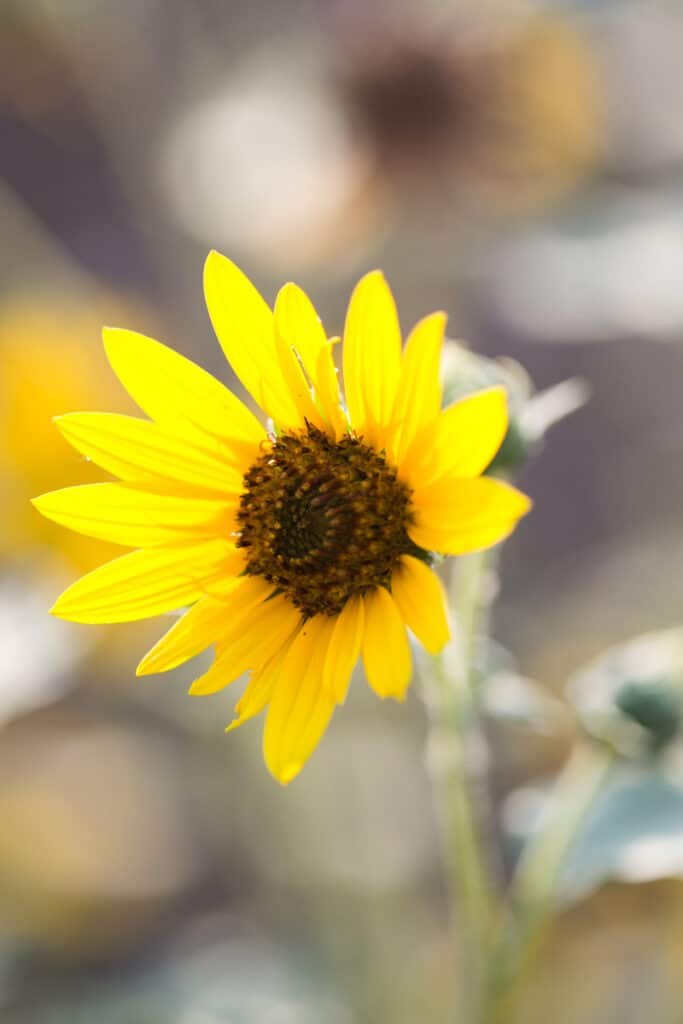
Sunlight + Temperature
As their name implies, sunflowers love light! They need at least 6 hours of direct sun a day to thrive.
This means that they can also grow in locations that receive some shade, just make sure you are planting your wild sunflower seeds in an area that gets a long stretch of sun either in morning or evening.
Wild sunflowers can withstand heat and temperatures that would wither many plants, and can tolerate direct, all day sun.
Optimal growing temperature is around 78-80 degrees, although as mentioned, common sunflowers can thrive in higher heat.

Watering
Sunflowers are naturally heat loving and drought tolerant. When growing wild sunflowers, you can water weekly during dry spells.
Once plants are established, soak deeply when watering. Be careful watering seeds and seedlings that you do not damage small plants or wash away seeds.
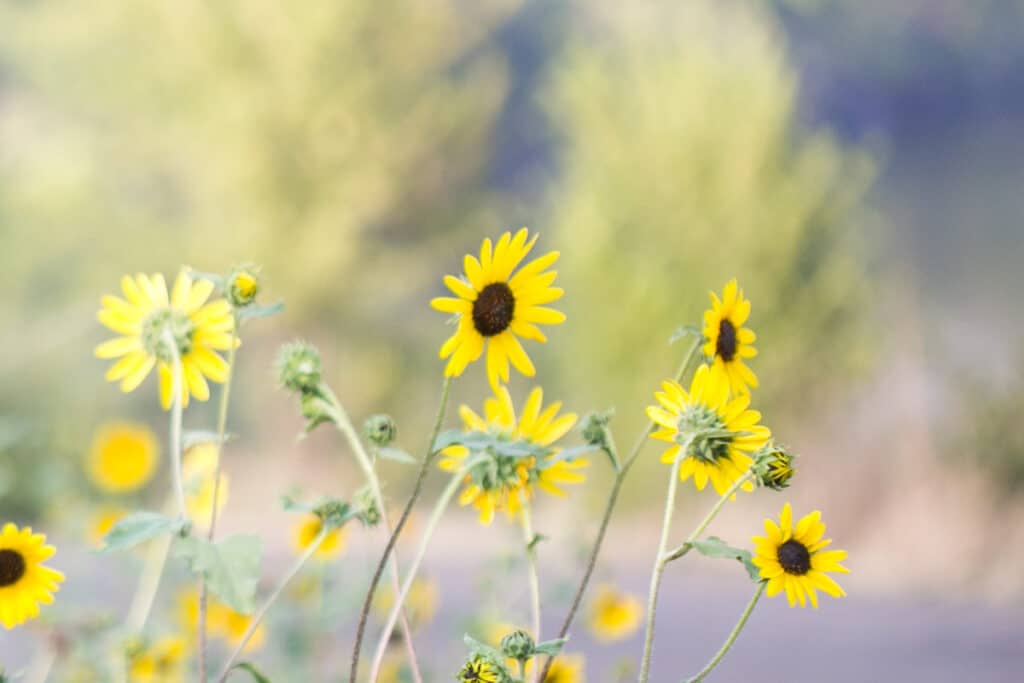
Where To Plant
Plant in an open area that receives at least 6 hours of direct sunlight. These sunflowers are very hardy and can live in areas that are not sheltered from the wind.
How To Plant
When planting sunflower seeds, push aside dirt to 1/8th of an inch. Place 2 to 3 seeds in one space, in order to ensure that at least one seed thrives!
Water the soil and keep moist while germinating, however do not keep the soil soggy, or the seeds may rot.

If more than one sunflower seed germinates and successfully produces a plant, do not remove the additional sunflower starts. If you attempt to pull them out, you will disturb the roots of the adjacent plants. Remove the excess sunflower plants by clipping them with a pair of scissors near the base.
Wild Sunflower Bloom Time
July-Early October
These wildflowers will put out a heavy bloom once in mid summer that will last for weeks. Additional blooms will occur throughout late summer and into early Autumn.

Can You Eat Wild Sunflower Seeds?
Yes, wild sunflower seeds are edible. Being rich in healthy fats, sunflower seeds were a staple of the Native American diet. The leaves and stem are also edible, and can be boiled or used in salads (although they may not be found to be as palatable as the seeds!).
Do Wild Sunflowers Come Back Every Year?
Sunflowers are an annual, meaning that each plant grows, blooms and dies in one season. An individual plant does not live longer than one year. Sunflowers drop their seeds, however, and re seed themselves easily and prolifically. Of course, many of the seeds are eaten by birds, squirrels, and other wildlife, but some seeds survive, which is why you will see bunches of common sunflowers in the wild.
Get our list of the best annuals to grow in full sun here.
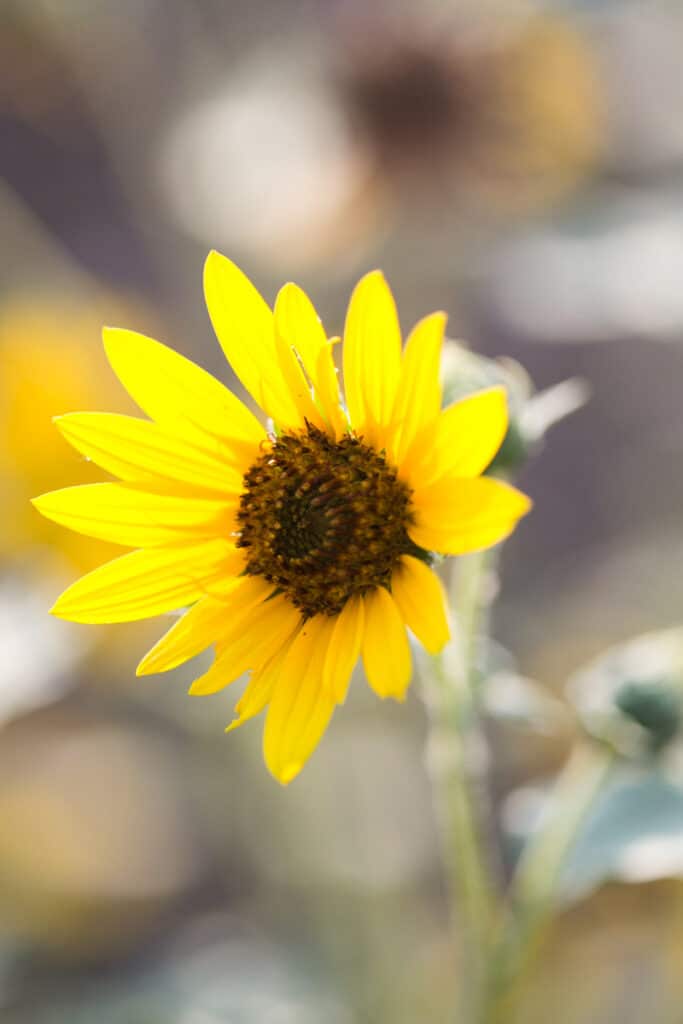
Wild Sunflower Benefits
There are many benefits to growing common sunflowers. Notably, they are incredibly inexpensive and easy to grow. Sunflowers are a perfect flower for the beginner gardener!
Wild sunflowers are the showiest of sunflowers, branching from the main stalk to provide many happy blooms.
They provide provide many benefits for the birds, bees, and wildlife. They are a native species in many areas, and provide ample food for many different types of birds and insects.
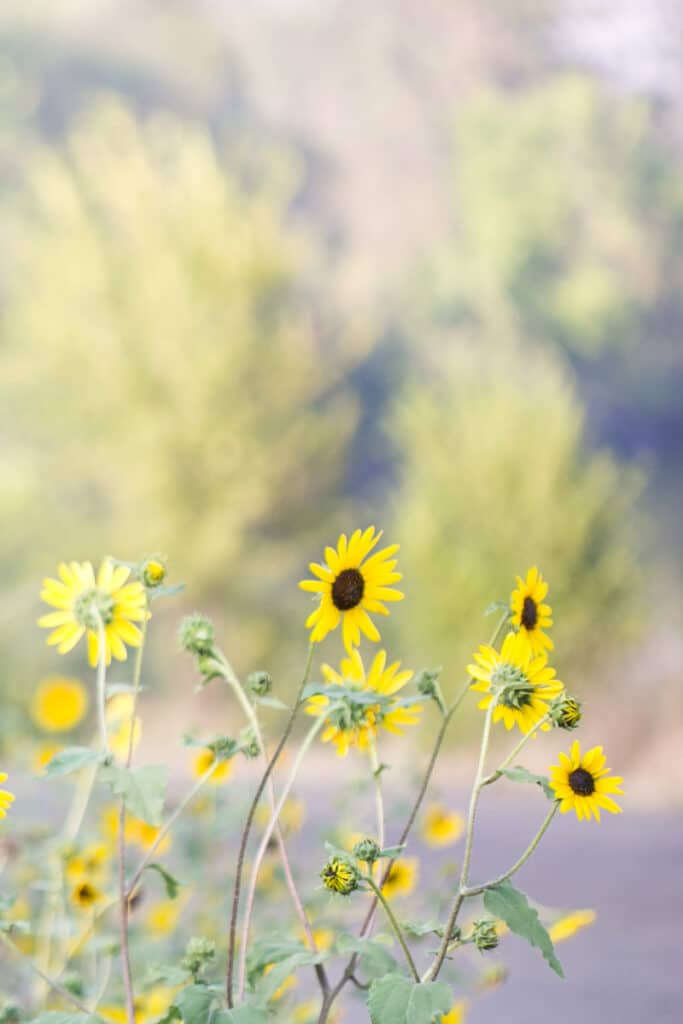
As shown, bees are especially attracted to wild sunflowers for the pollen and nectar they provide. Adding these beauties to your flower garden will encourage pollinating insects to visit. Plant common sunflowers around the perimeter of a vegetable garden to attract pollinators to your veggie patch.
Birds feast upon the sunflower seeds in late fall, naturally cleaning up the spent annuals.
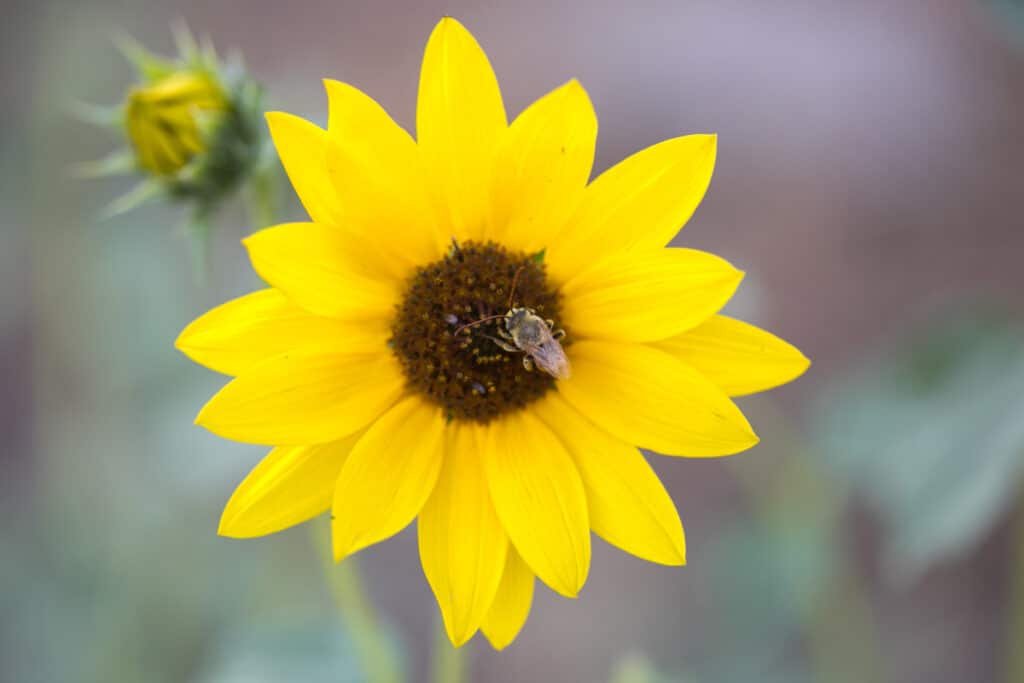
In addition to being a rich resource for wildlife, wild sunflowers are a wonderful, cheerful plant that can brighten up your landscape and provide an easy and charming border when planted en masse. Consider planting along a driveway, fence line, or bordering a garden.
Wild sunflowers are easy to grow with kids, and pair well with zinnias, cosmos, and cottage flowers.
Spruce up your living quarters or send a charming gift to a neighbor by taking advantage of the prolific growth of your sunflowers and cutting a few for a vase. If planting en masse, you will have plenty of beautiful flowers to share.
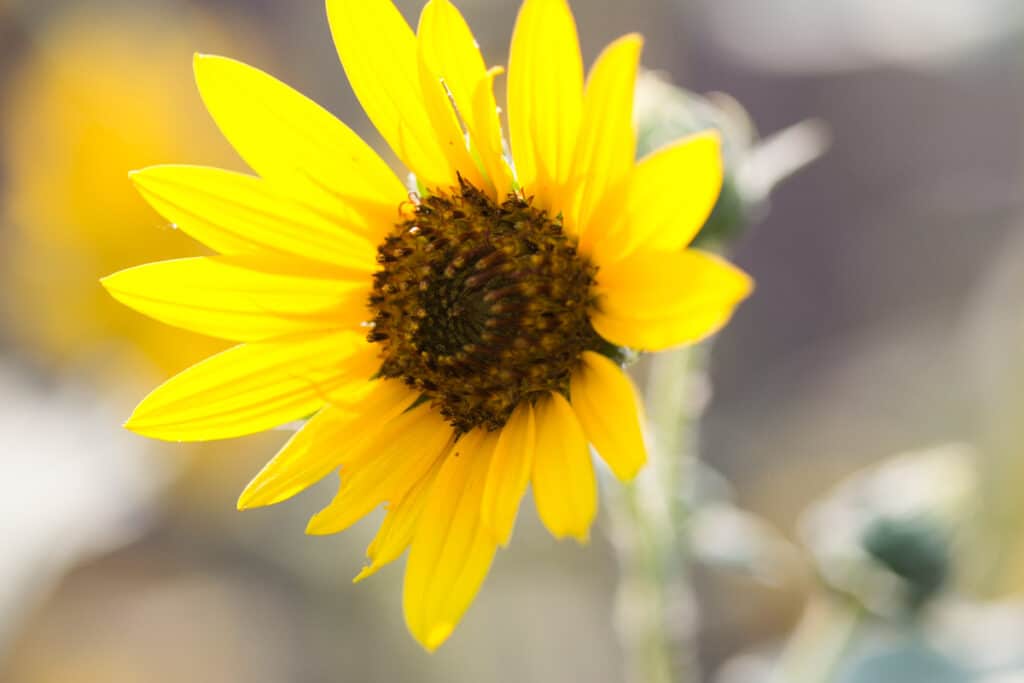
Additional benefits of common sunflowers include the amazing nutritional properties gleaned from the seeds. Prized by Native Americans for their seeds, which were ground into a meal for bread, sunflower seeds are increasingly making their way into the modern day diet.
Wild Sunflowers Vs Cultivated Sunflower
What are the main differences between wild sunflowers and modern cultivated sunflowers? Wild sunflowers have many blooms while cultivated sunflowers often only have one single bloom. And while wild sunflowers have small flower heads, cultivated sunflowers often boast one huge flower head!
Additionally, sunflowers naturally reseed and spread prolifically.
Wild Sunflowers: The Perfect Flower?
Easy to grow, drought tolerant, beautiful and nutritious…. are common sunflowers the perfect flower? If you have grown these easy wildflowers yourself, please leave a comment and share your experience!
Happy gardening!




